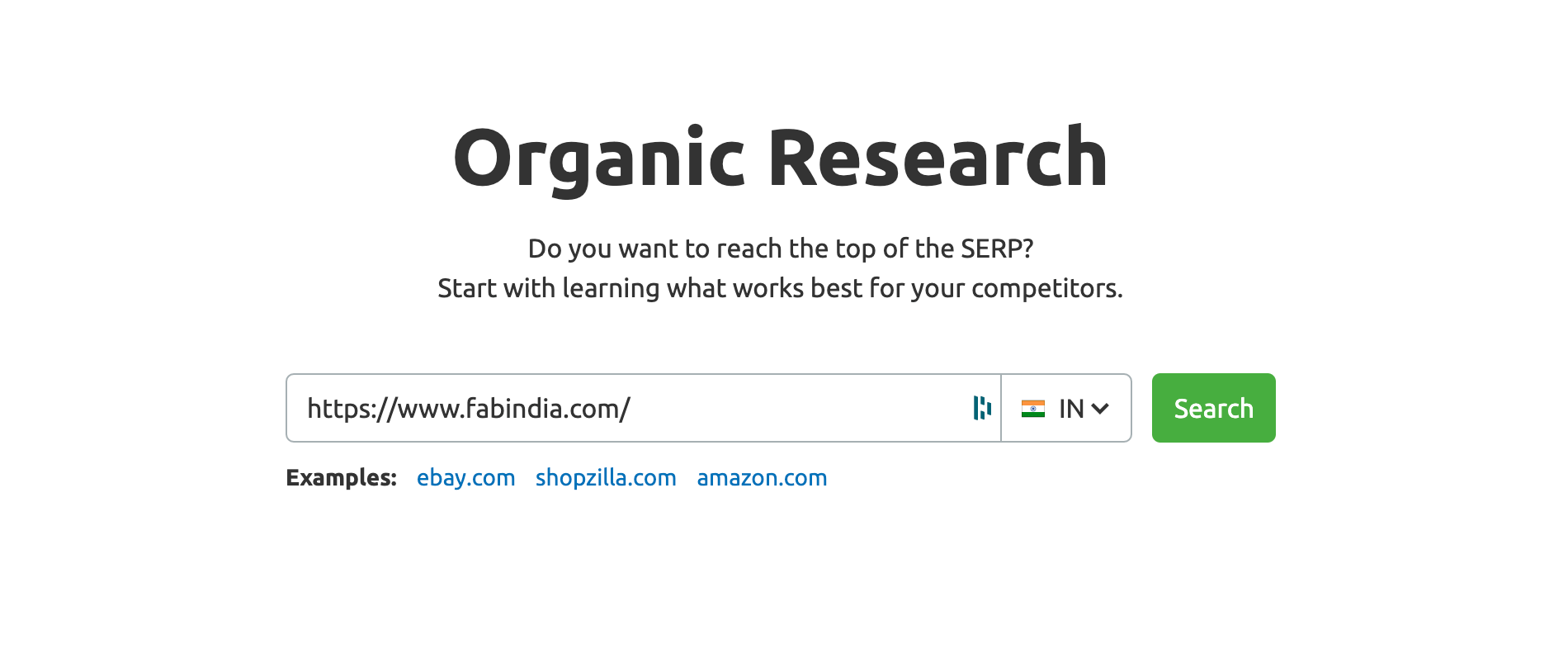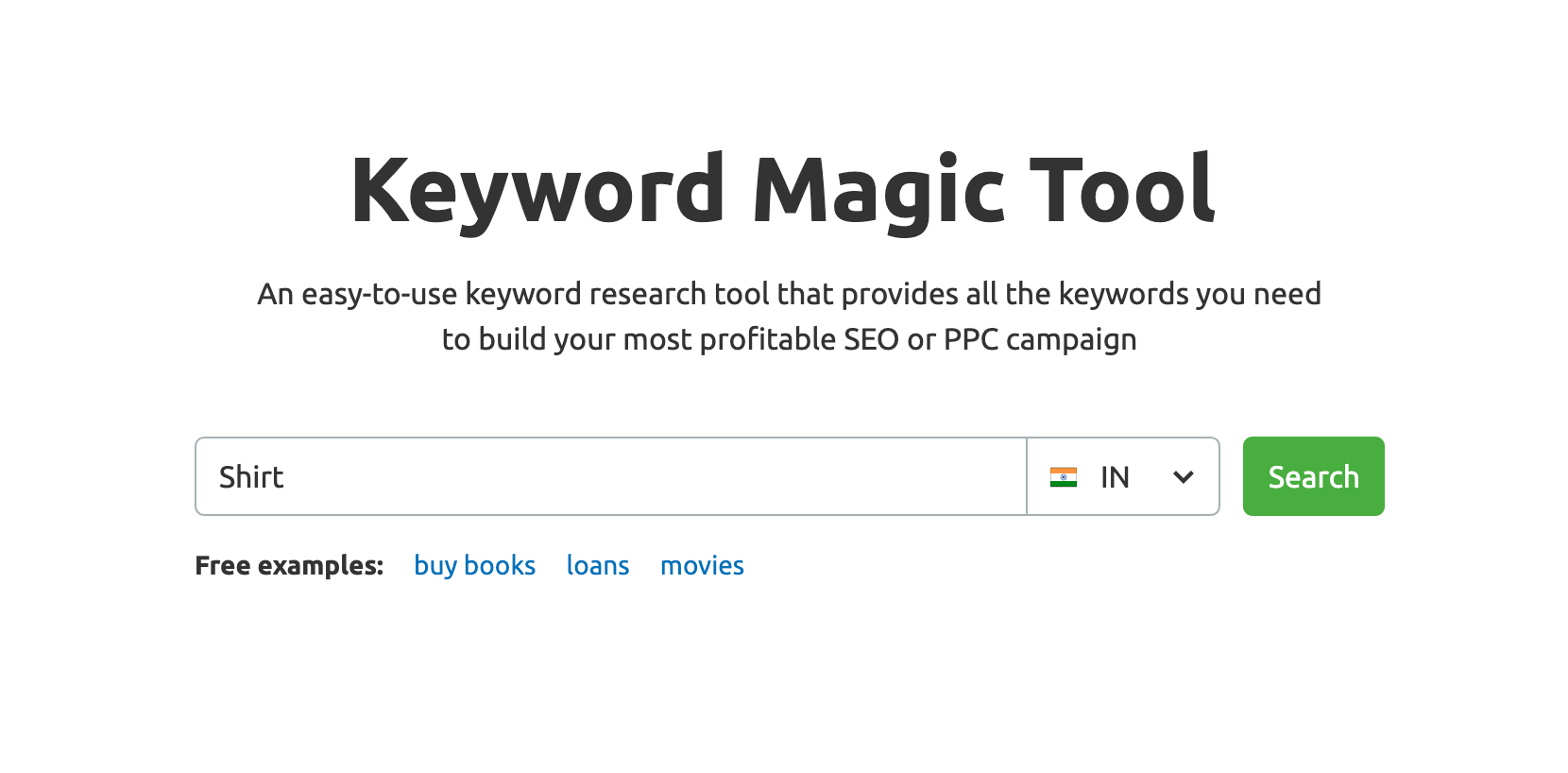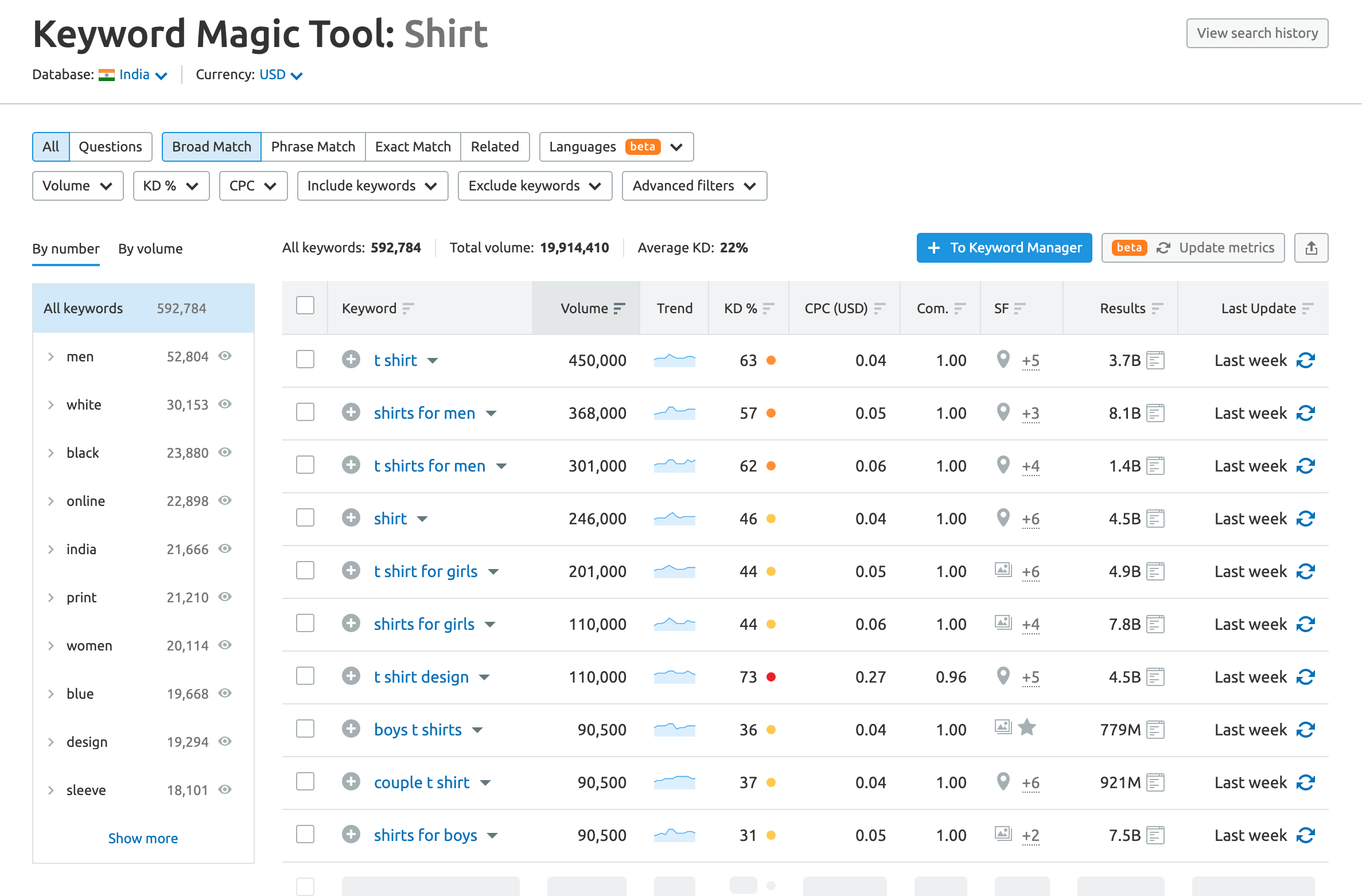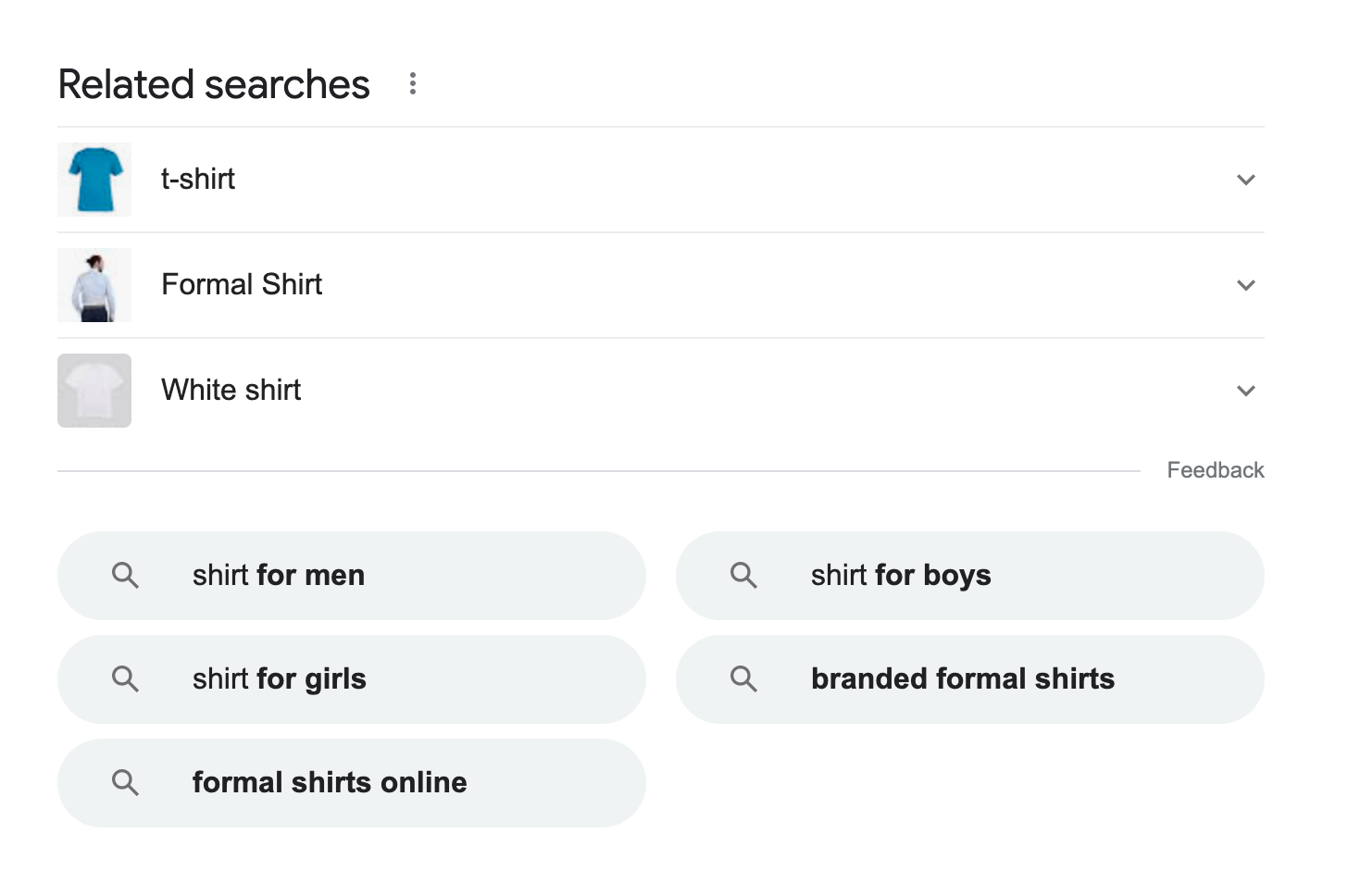One of the most common challenges faced by eCommerce site owners is driving quality traffic from search engines.
While there are many factors behind the search engine ranking on Google, Bing, and others, keyword research plays a crucial role in optimizing your site pages for higher ranking.
And, in this article, I’m going to share everything I know about eCommerce keyword research and help you identify the most relevant keywords that can drive quality traffic to your site and generate more sales.
But before we begin, let’s understand what exactly keyword research is and why it is important for eCommerce SEO.
What is Keyword Research?
When it comes to improving your brand’s visibility among your target consumers, you need to know the specific keywords people are using to find products like yours and the intention behind them.
The process of identifying the keywords that your target consumers are using to find the products or services that you offer on the internet is known as Keyword research.
By knowing what your potential consumers are looking for, you can optimize your website content with relevant content & information using the terms & keywords they use while searching.
Moreover, optimizing the site pages for target keywords allows search engine bots to determine which keywords a specific page has to be indexed for.
This way, you can reach your most potential consumers who can relate to the content, which results in higher sales and conversion rates.
So, in a nutshell, keyword research is an essential aspect of eCommerce SEO that can help you with –
- Optimizing your website pages using targeted keywords.
- Drive targeted quality traffic to your site
- Providing in-context information to consumers
- Improving the conversion rates
5 Steps to Perform Ecommerce Keyword Research
There are many ways to do keyword research – you can do it manually or use keyword research tools.
In this section, I’m going to show you both processes so that you can determine if you want to invest in a keyword research tool or time in doing it manually.
Before going ahead, here are a few things you should know to make the best use of this guide –
- For this guide, I will be using a clothing store as an example & keyword research will revolve around it.
- If you already own a store, I recommend you follow the steps as you’ll be reading.
- I will be using Semrush. It is one of the best keyword research tools that you should give a try.
So, are you ready? Let’s get started.
Step 1: Make a list of Seed Keywords
A seed keyword is the most common or generic keyword that can relate to your products. For example, for a shoe store, “Shoes” would be a seed word.
On the other hand, for a clothing store selling different types of products, their product categories & subcategories would be the most relatable seed keywords. Examples – “menswear,” “men’s top wear,” “Women’s wear,” “trousers,” etc.
Just think about what words people use to find your product. In fact, you can also interact with consumers to learn their behavior and figure out the most common words they use to define your products.
Remember, this is an essential step in the keyword research process- seed keywords form the foundation for the next steps. So, take your time and identify your seed keywords first.
Step 2: Find the keywords your competitors are ranking for
Accessing your competitors is the easiest way to find quality keywords. You just have to find a successful competitor in your niche and identify the keywords driving massive traffic to your website.
To get started, you can simply search for one of your seed keywords and manually list out the top competitors.
Here, you may find websites like Amazon, blogging sites, or news websites ranking for your target keywords. If so, you should not consider them as your competitors and look for online stores of your kind.
If necessary, keep looking for sites on page 2 and beyond because if websites can make a place in the top 20-30 search results for highly competitive keywords, they might be doing better for other related keywords.
Next, you will need an SEO tool to analyze these competitors’ sites. Semrush is one of the best and my favorite SEO tools and you can sign up now to get a 7-day free trial.
You just have to go to the Semrush Organic Research Tool enter the website URL of one of your competitors, and choose the target country.

Hit the search button, and on the next screen, you’ll see their traffic insights and top organic keywords as shown below –

Next, click the “See all organic keywords” button and export the list. Follow the steps and export top-ranking keywords for each competitor’s website.
Note – You can also use filters to exclude irrelevant keywords based on search volume and other metrics.
Step 3: Find related keywords
After accessing at least ten competitors, you should have a good chunk of relevant keywords. But this is not enough – your competitors might not be targeting other relevant keywords that you can find and drive more traffic.
Such keywords are the terms related to your seed keywords that your target audience uses to search for the products you offer. It includes the long-tail keywords that you can’t afford to ignore.
You can find related keywords in two simple ways –
1. Use Keyword research tools
There are many keyword research tools in the market, but not every tool provides accurate data for keywords. You need a tool that provides accurate and updated insights for each keyword to help you pick the right keywords.
Again, Semrush is the best tool for keyword research. It makes the keyword research as simple as it can be.
You just have to go to Semrush Keyword Magic Tool from the left sidebar, enter one of your seed keywords, and select your target country from the dropdown.

Hit the search button, and you’ll see a complete list of related keywords as shown below.

In the above image, you can view the statistics for each keyword and add filters to clean the list by search volume, competitor levels, and other metrics.
Export the list and add it to your spreadsheet.
2. Use Google Suggestions
If you are not using a keyword research tool, you can still find the related keywords for free.
Go to Google.com, enter your seed keywords, and Google will display some suggestions that people are searching for.
Here’s what I got when I entered the keyword “shirt” –

Now, take your notepad or open a spreadsheet to list out these keywords.
Next, hit the search button, and you’ll see the searches related to your keywords at the bottom of the result page as shown below –

Again, add these keywords to your list and move to the next step.
Step 4: Analyze & choose relevant keywords
Now that you’ve come up with a list of potential keywords, it’s time to analyze them and shortlist the most relevant ones for your site.
To create an effective SEO strategy, rather than targeting tons of keywords, you need a specific list of keywords that you can focus on and optimize the site accordingly.
Have you exported the keyword list from Semrush? If so, compile all the keywords in a spreadsheet and analyze keywords based on the following metrics –
- Search Volume – number of searches per month.
- Keyword Difficulty (KD%) – represents the difficulty of ranking in the top 10 results.
- Cost-per-click (CPC) – the amount you’ll pay per click to drive traffic via search ads.
- Competition Density (Com.) – measures the difficulty of ranking via paid search campaigns (PPC).
Remember, keywords with high search volume but low keyword difficulty are the best bet for new and small websites to attract quality organic traffic.
Once you have shortlisted the keywords, you should have a refined list of keywords that describes your eCommerce site, pages, and the products you are selling.
Step 5: Map the keywords with search intent
By now, you should have a good chunk of the most relevant and targeted keywords for your website SEO.
However, the work is not done yet.
To make the best use of these keywords, you must identify the user search intent behind them and optimize your SEO strategy accordingly.
If you don’t know, search intent is the reason why people use a particular search query. There are four main types of search intent which are as follows –
- Informational – Users searching for information about products. E.g., “Types of shoes”
- Commercial – Users doing research perform making the purchase decision. Such searchers are most like going to buy but not immediately. E.g., “Best formal shoes for wedding,” “Best shoes for rainy season”
- Navigational – Users are looking for a specific brand product or website via search results. E.g., “ecomsutra,” “Nike Shoes”
- Transactional – Users are most like ready to make the purchase and looking for the right product. E.g., “Buy Nike Sports shoes,” “Cost of Hush Puppies Shoes”
By identifying the user intent behind the selected keywords, you can decide which keywords to target with blog posts or product pages.
So, now go through each keyword and think about what you would be looking for if you searched for the specific term. You can also search for the keywords and go through the top results to understand what type of user intent they are serving.
Ecommerce Keyword Research – Wrapping Up
SEO is a long-term investment for eCommerce sites to acquire new customers organically and eventually reduce advertising costs over time.
And, keyword research is a crucial step in this process to build an effective eCommerce SEO strategy that gets your site ranked higher and generates more sales for your store.
In this guide, we have talked about different strategies that you can implement to attract links from high-quality websites from your niche and improve the domain authority for your site to get on top of the search results.
Now, it is your turn to implement these strategies and create a list of relevant keywords per your products and overall business goals.

